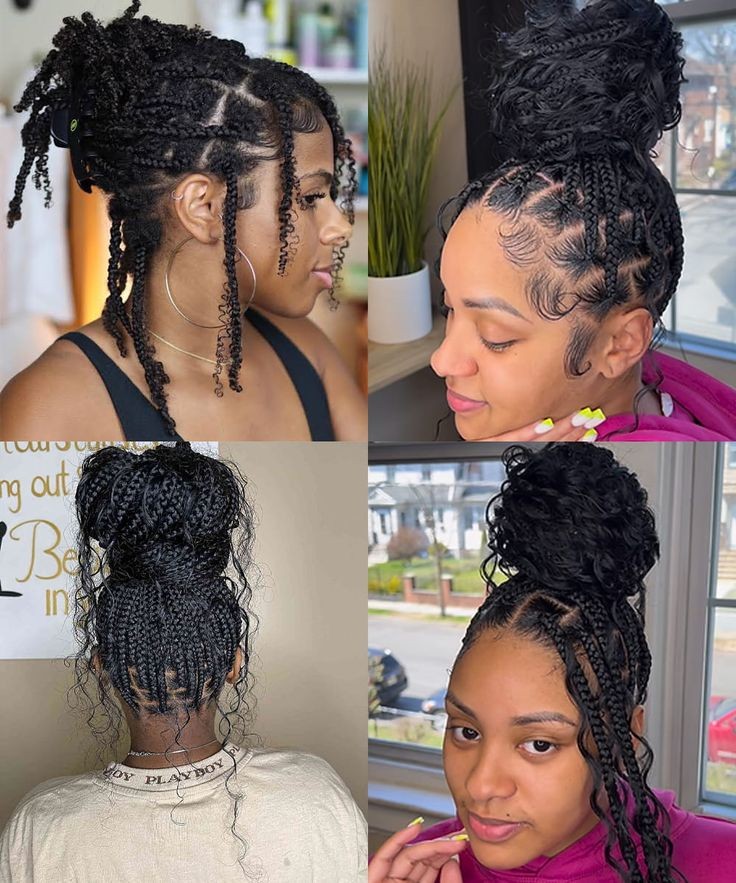Knotless braids are a popular protective hairstyle known for their versatility, minimal tension on the scalp, and long-lasting wear. They’re achieved by continuously feeding feeding the braiding hair through the base without knots, resulting in a braid that appears to “grow” from the scalp. Here are 15 examples of knotless braids with their pros and cons:
1.Box Braids:
Box braids involve sectioning hair into square-shaped parts, while knotless braids start without a knot at the roots for a more natural look.
Pros of box braids include durability and versatility, but they may be heavy. Knotless braids are lighter and less tension on the scalp, yet they might not last as long.
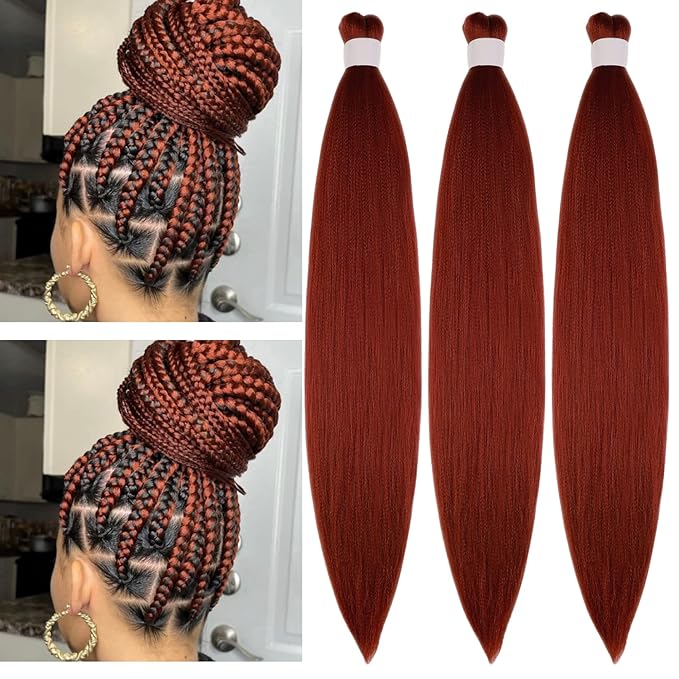
Cons for box braids include potential heaviness and scalp tension, while knotless braids may need more frequent touch-ups. Both styles offer protective benefits but vary in appearance and maintenance
2.Lemonade Braids:
Pros:
Lemonade braids, a type of knotless braids inspired by Beyoncé’s iconic look, offer a natural appearance and reduced tension on the scalp. They are versatile for styling, especially with the distinctive side-sweeping pattern, and provide a lighter feel compared to traditional braids with knots.
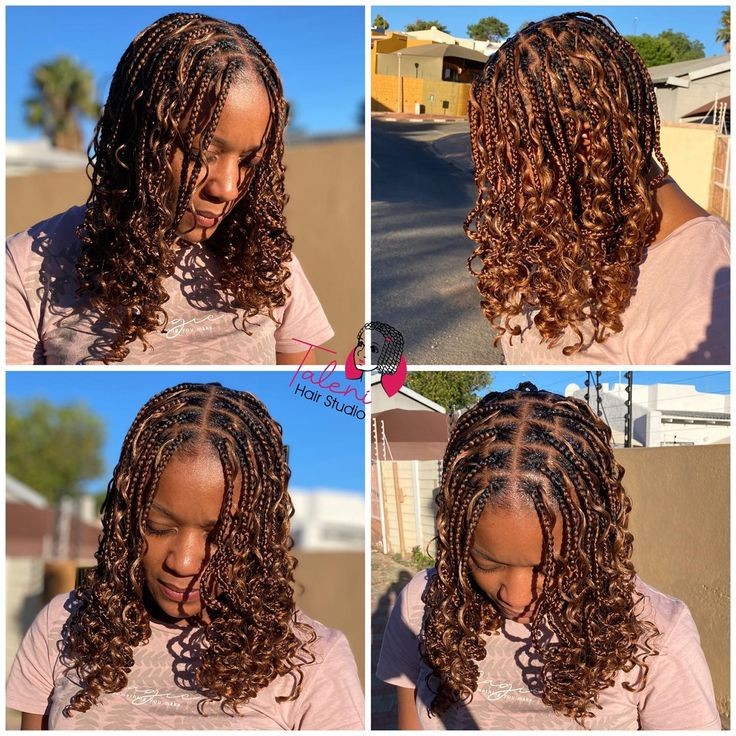
Cons:
However, the installation process can be time-consuming, and intricate patterns may require a skilled braider. While they are gentler on the scalp, the lifespan might be shorter, necessitating more frequent touch-ups for a well-maintained look.
3.Fulani Braids:
Pros:Fulani braids, a variation of knotless braids adorned with accessories, offer a natural and lightweight feel. The braids are versatile, allowing for various styling options, and the incorporation of beads or cowrie shells adds a cultural and stylish touch. The absence of a knot at the roots reduces scalp tension.
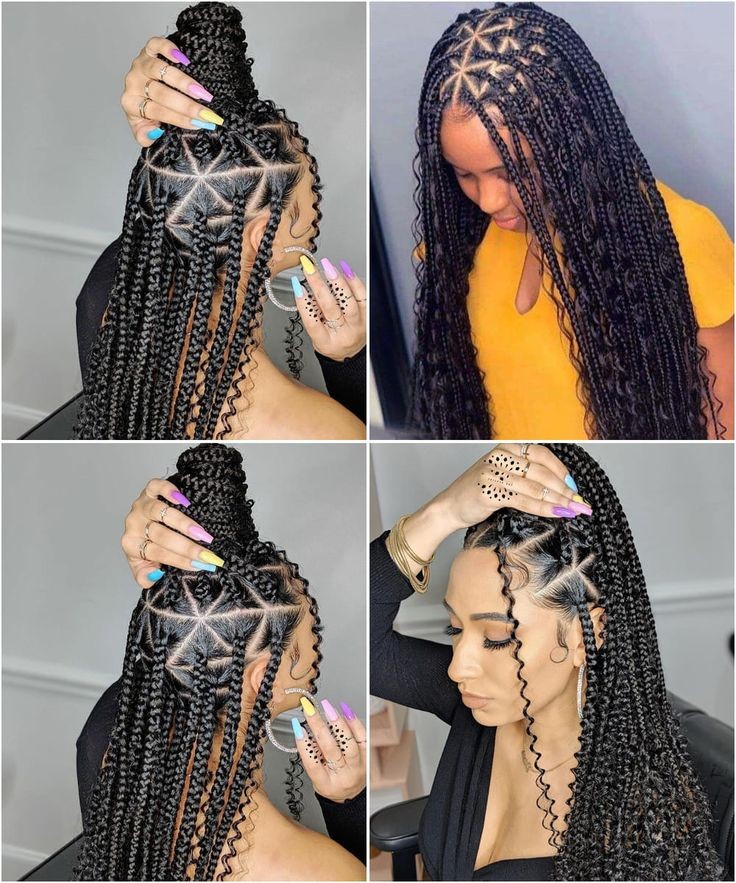
Cons:However, the intricate designs may demand a skilled braider and a longer installation time. While the accessories enhance aesthetics, they may require extra care, and the braids might need more frequent touch-ups for a consistently polished appearance
4.Goddess Braids:
Pros:
Goddess braids, a form of knotless braids characterized by thicker, chunkier plaits, offer a natural look and reduced tension on the scalp. They are versatile for styling and can be adorned with various accessories. The larger size makes them a quicker option for installation, and their protective nature supports hair health.


Cons:
However, achieving intricate patterns may require a skilled braider. While the chunkier style may be less time-consuming, it might not last as long as smaller knotless braids. Maintenance is still necessary to prevent fraying and keep the style neat.
5. Butterfly Braids:
Pros:Butterfly braids, a variation of knotless braids with a distinct butterfly-shaped pattern, offer a unique and eye-catching style. They provide a lighter feel on the scalp due to the knotless technique, and the butterfly design allows for creative expression. The braids are versatile for styling and can be adorned with accessories.


Cons:However, achieving the intricate butterfly pattern may require a skilled braider, potentially extending the installation time. The detailed design might make touch-ups more challenging, and while visually appealing, maintaining the shape may demand extra care and attention
6.Crochet Braids:
Pros:Crochet braids offer a swift and efficient installation process, making them a time-saving option. The versatility of this style is a significant advantage, providing a wide array of styling possibilities with different crochet hair textures and lengths. This adaptability allows for a diverse range of looks, catering to various preferences and fashion trends.


Cons:On the downside, there’s a potential for tension on the scalp if the crochet braids are not installed with care. This tension can result in discomfort, emphasizing the importance of skilled installation. Additionally, the maintenance aspect should be considered, as crochet braids require regular attention to prevent frizz and ensure the longevity of the neatly styled appearance.
7.Bantu Knots:
Pros:Bantu knots bring with them a cultural significance, serving as a representation of traditional African hairstyles with deep historical roots. Beyond cultural value, these knots offer versatility in styling. Apart from the distinctive knots themselves, Bantu knots can be unraveled to produce beautiful, defined curls or waves, providing flexibility in achieving different looks.
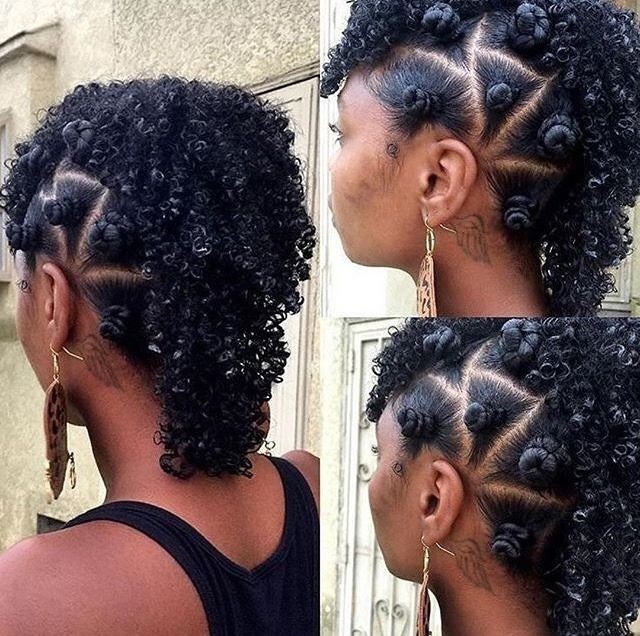

Cons:Despite their cultural and stylistic merits, Bantu knots come with some drawbacks. The process of creating numerous small knots can be time-consuming, demanding patience during the styling phase. Additionally, there is a risk of tension on the scalp if the knots are pulled too tightly, potentially causing discomfort or damage. Hence, a delicate and careful approach to styling is crucial to mitigate these concerns.
8.Cornrows:
Pros:Cornrows, as knotless braids, offer distinct advantages. Their classic and well-established nature contributes to a time-efficient installation process, making them a practical choice for individuals seeking a quicker braiding option. Additionally, once installed, cornrows are known for their low maintenance, providing convenience for those leading busy lifestyles.




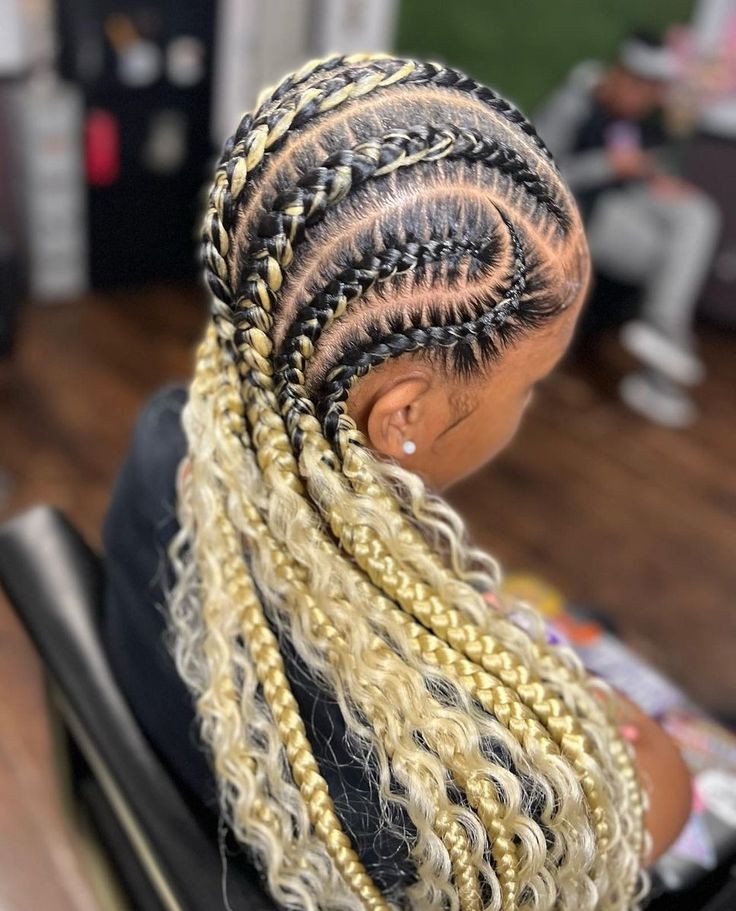



Cons:However, there are considerations to bear in mind. Braiding cornrows too tightly can result in scalp tension, potentially causing discomfort or damage. Furthermore, while cornrows are versatile, they may offer fewer styling options compared to some intricate knotless braiding styles, which could limit the range of creative hairstyles one can achieve.
9.Tribal Braids:
Pros:Tribal braids, within the realm of knotless braids, come with notable advantages. These braids often showcase intricate patterns and styles inspired by various cultures, adding a unique and culturally rich aesthetic. Additionally, the absence of knots in the braiding process contributes to a smoother and more natural appearance, enhancing the overall look.


Cons:However, it’s essential to consider potential drawbacks. The installation of tribal braids, especially with elaborate patterns, can be time-consuming, requiring a patient and skilled stylist. Additionally, the tightness of the braids, if not managed carefully, may lead to scalp tension and discomfort. Balancing the desire for intricate styles with the practical aspects of installation and comfort is crucial when opting for tribal braids.
10. Feed-in Braids:
Pros:Feed-in braids, as a form of knotless braids, offer specific advantages. The technique involves gradually adding small sections of extension hair while braiding, creating a natural and seamless appearance. This method allows for a gradual and realistic progression of thickness, resulting in a visually appealing style. Additionally, the process is known for its ability to reduce tension on the scalp, promoting a more comfortable experience for the wearer.


Cons:However, there are considerations to keep in mind. The installation of feed-in braids may require a skilled hand to achieve a seamless blend between natural hair and extensions. This intricacy can extend the overall installation time. Additionally, despite efforts to minimize tension, improper installation or excessive tightness may still lead to discomfort on the scalp. Careful consideration of these factors is essential when opting for feed-in braids.
11.Crochet Faux Locs:
Pros:Crochet faux locs offer a quicker installation compared to traditional locs, making them a time-efficient choice. These locs are lightweight, exerting less tension on the scalp and providing a comfortable experience. Additionally, they allow for versatile styling options and come in various lengths, enhancing the overall flexibility of the hairstyle.


Cons:Despite their advantages, crochet faux locs may not have the same longevity as traditional locs. Proper care is essential to prevent unraveling, requiring maintenance efforts. Furthermore, customization options are somewhat limited due to the use of pre-made locs, restricting the ability to tailor the style extensively.
12.Knotless Dreadlocks:
Pros:Knotless dreadlocks, akin to knotless braids, present a streamlined installation process. This technique eliminates visible knots at the base, resulting in a neater appearance. The gradual extension attachment reduces tension on the scalp, making it a more comfortable option. Knotless dreadlocks also offer versatility in styling, allowing for different looks and lengths to suit individual preferences.
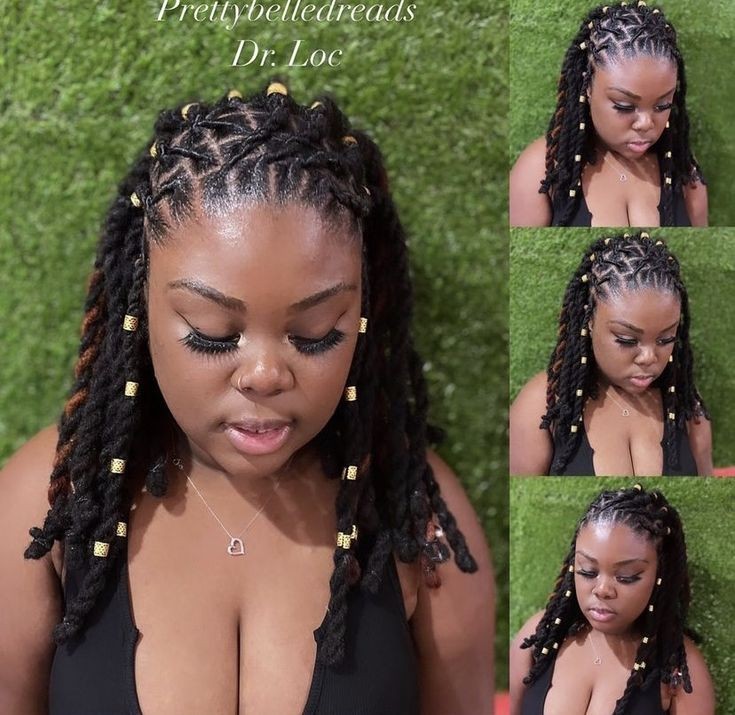

Cons:While knotless dreadlocks have their merits, their lifespan may be shorter compared to traditional dreadlocks due to the absence of secure knots. Proper care is crucial to prevent premature unraveling, requiring regular maintenance. Additionally, the customization options are somewhat constrained as pre-made extensions are commonly used, limiting the extent to which the style can be tailored
13.Triangle Part Knotless Braids:
Pros:Unique Geometric Style: The incorporation of small triangles instead of standard parts offers a distinctive and trendy look, adding an artistic flair to the braids.



Cons:Time-Consuming Installation: Achieving precise triangle parts demands meticulous attention, making the installation process more time-intensive compared to traditional knotless braids.
14.Knotless Jumbo Braids
Pros:Knotless jumbo braids offer a bold and dramatic aesthetic, providing a voluminous look without the discomfort of traditional knotted styles. The absence of knots at the base reduces tension on the scalp, making it a more comfortable option. These braids allow for versatile styling and are generally quicker to install than their knotted counterparts.Cons:While knotless jumbo braids provide a striking appearance, they may be heavier compared to smaller braids. This added weight can contribute to tension, potentially causing discomfort. Additionally, the large size may limit certain intricate styling options, and proper maintenance is crucial to prevent unraveling over time..


Knotless braids have become a popular trend in the world of hair styling, offering a sleek and natural look with less tension on the scalp. Unlike traditional braids, knotless braids are created by feeding in extensions with a specialized technique, eliminating the need for knots at the base of each braid. This new method has gained a lot of attention and has even been endorsed by celebrities and influencers. However, as with any trend, there are both pros and cons to consider before jumping on the knotless braid bandwagon. In this article, we will delve into the benefits and drawbacks of this braiding technique, providing you with all the information you need to make an informed decision about whether


knotless braids are the right choice for you. From the potential impact on hair health to the level of maintenance required, we will explore all aspects of this stylish trend and help you determine if it is the perfect fit for your haircare routine. So, let’s unravel the pros and cons of knotless braids and see if they live up to the hype.
Protects natural hair and edges.
In addition to the trendy and stylish look that knotless braids offer, they also provide a significant benefit in protecting natural hair and edges. Unlike traditional braids, which can sometimes exert excessive tension and strain on the hairline, knotless braids distribute the weight more evenly across the scalp.
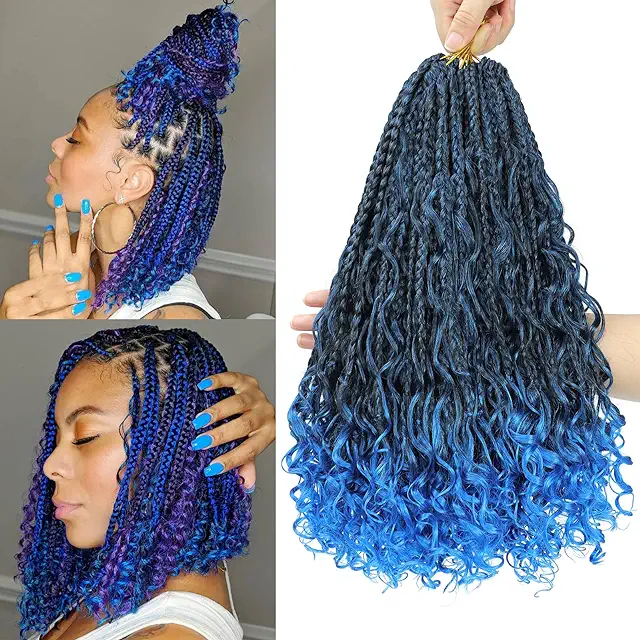

This gentler approach helps to minimize the risk of hair breakage and traction alopecia, which is a common concern for individuals with delicate or thinning edges. By opting for knotless braids, individuals can enjoy the versatility and beauty of braided hairstyles without compromising the health and integrity of their natural hair and edges.
Versatile styling options available.
One of the standout advantages of knotless braids is the wide range of versatile styling options that they offer. With knotless braids, individuals can experiment with various lengths, sizes, and patterns to achieve their desired look. Whether you prefer sleek and straight braids or opt for a more textured and voluminous style, knotless braids can be customized to suit your personal preferences.
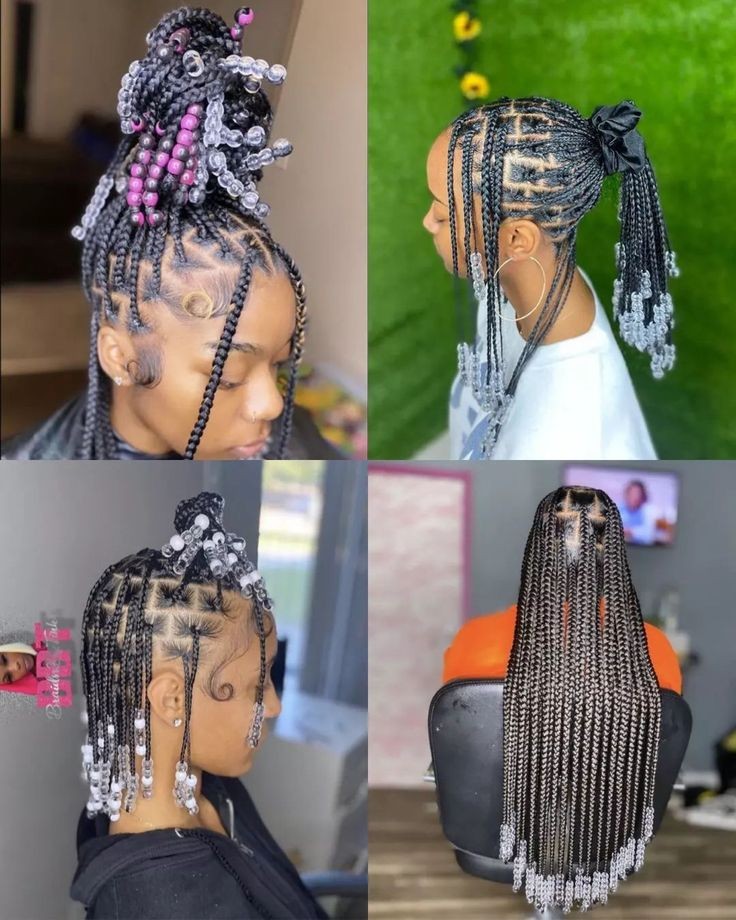

Additionally, knotless braids can be easily styled into updos, ponytails, or even half-up, half-down hairstyles, allowing for endless possibilities and creativity. Whether you’re looking for a sophisticated, professional look or a more casual, bohemian vibe, the versatility of knotless braids ensures that you can effortlessly achieve the style you desire.
Takes less time to install.
One of the notable benefits of knotless braids is the significant time-saving aspect during the installation process. Unlike traditional braiding methods that involve creating knots at the base of each braid, knotless braids eliminate the need for this step. As a result, hairstylists can seamlessly weave the extensions into the natural hair, leading to a quicker and more efficient installation process.


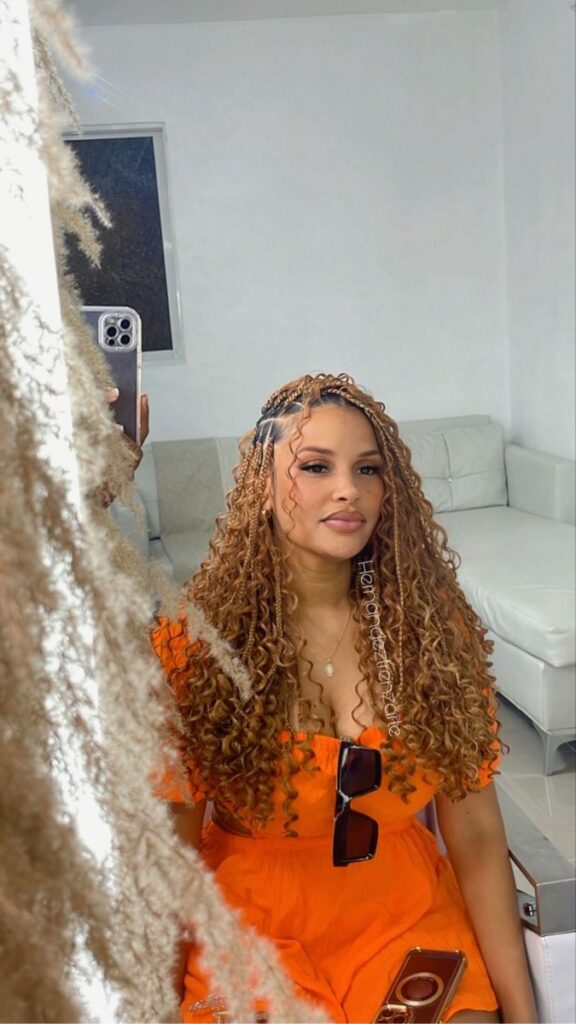

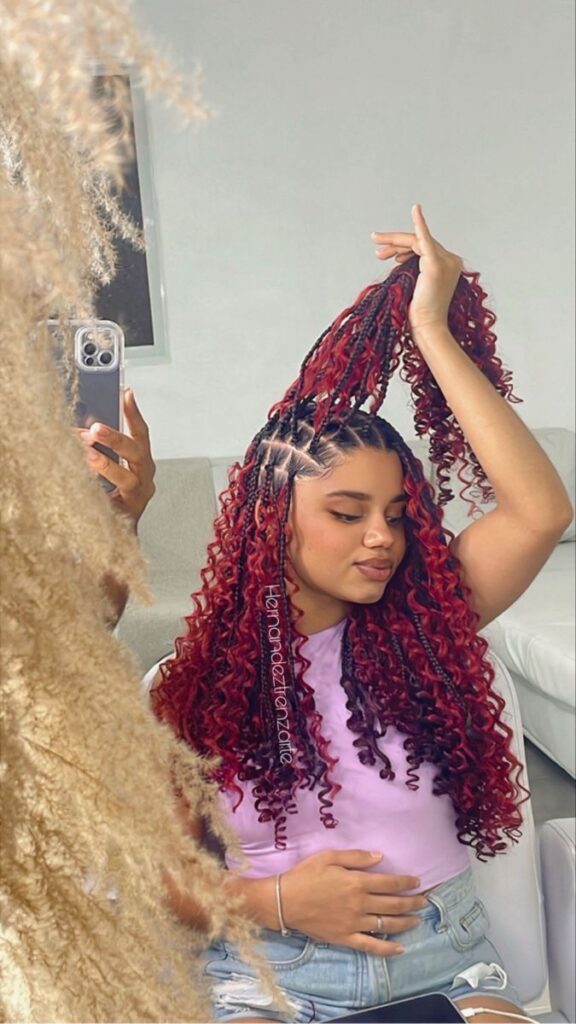

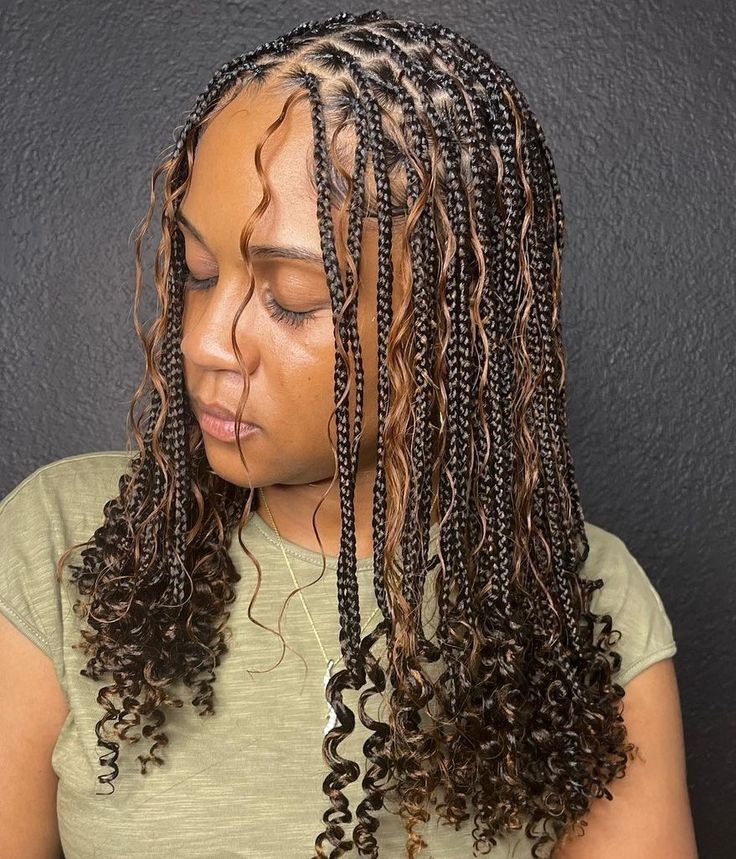

This time-saving feature is particularly advantageous for individuals with busy schedules or those who prefer spending less time in the salon chair. Knotless braids provide the opportunity to achieve a stunning hairstyle without sacrificing valuable time.
No tension or pulling sensation.
With knotless braids, one of the major advantages is the absence of tension or pulling sensation. Traditional braiding methods often involve tightly securing the hair at the base with knots, which can put strain on the scalp and lead to discomfort. In contrast, knotless braids are created by gradually adding hair extensions without the use of knots, resulting in a more gentle and comfortable experience.


This can be especially beneficial for individuals who have a sensitive scalp or are prone to headaches. The lack of tension also contributes to the overall longevity of the hairstyle, as it reduces the likelihood of breakage or damage to the natural hair. Knotless braids offer not just a stylish look, but also a comfortable and enjoyable hair braiding experience.
Can be costly depending on stylist.
The cost of knotless braids can vary depending on the stylist you choose. While some stylists may offer competitive pricing for their services, others may charge higher rates based on their level of expertise and the quality of materials used. It’s important to consider that knotless braids require a significant amount of time and skill to properly execute, which can contribute to the overall cost.








Additionally, the cost may also be influenced by factors such as the length and thickness of your hair, the desired style, and any additional services or treatments requested. It’s recommended to research and compare prices from different stylists to ensure you find one that aligns with your budget and provides the level of quality you desire.
Requires regular maintenance and touch-ups.
To maintain the longevity and appearance of knotless braids, regular maintenance and touch-ups are necessary. Over time, the braids may loosen or develop frizz, requiring adjustments to keep them looking fresh and neat. Depending on your hair type and lifestyle, you may need to schedule touch-up appointments every 4-6 weeks. During these sessions, your stylist will re-tighten any loose braids, fix any potential gaps, and refresh the overall style.








Additionally, it’s important to follow a proper hair care routine at home, which may include moisturizing the scalp, avoiding excessive manipulation, and using appropriate products to prevent breakage and maintain the health of your natural hair. By committing to regular maintenance and touch-ups, you can ensure that your knotless braids stay in top condition for an extended period.
More lightweight and comfortable.
One of the key advantages of knotless braids is that they offer a more lightweight and comfortable experience compared to traditional braiding techniques. The absence of tight knots at the base of each braid reduces tension on the scalp, minimizing discomfort and potential headaches. This lighter weight also allows for greater flexibility and ease of movement, making it more comfortable to wear knotless braids for extended periods.








The improved comfort of knotless braids makes them a popular choice for individuals seeking a stylish and manageable protective hairstyle without compromising on comfort.
Can last longer than traditional braids.
Another notable benefit of knotless braids is their potential to last longer than traditional braids. The absence of tight knots at the base of each braid reduces the strain on the hair follicles and scalp, resulting in less tension and breakage over time.
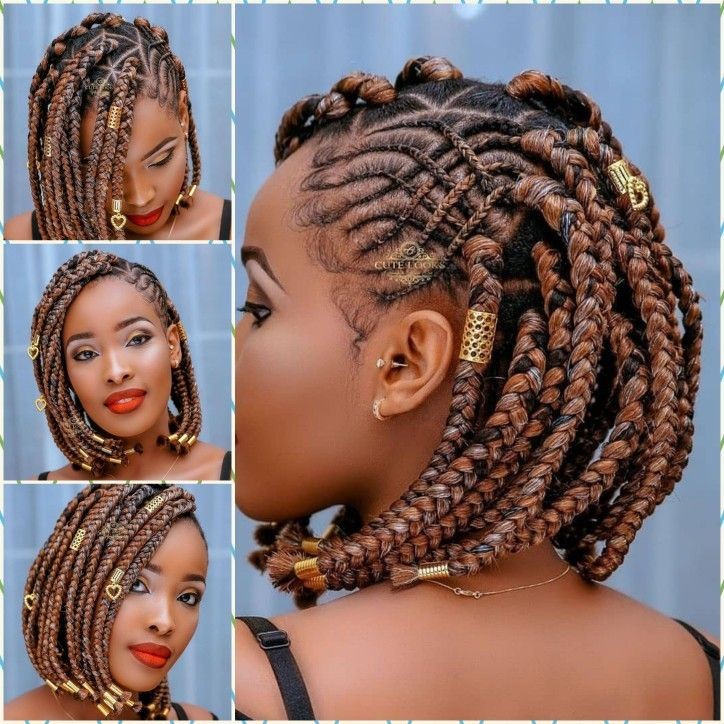

This can lead to an increased longevity of the hairstyle, allowing individuals to enjoy their knotless braids for an extended period without the need for constant touch-ups or re-braiding. The durability of knotless braids makes them a practical and cost-effective choice for those looking for a hairstyle that can withstand the test of time.
Less risk of hair breakage.
One of the significant advantages of opting for knotless braids is the reduced risk of hair breakage. With traditional braids, the tight knots used to secure the hair can place excessive tension on the hair strands, leading to breakage and damage. In contrast, knotless braids distribute the weight more evenly along the hair shaft, minimizing the strain on individual strands.








This gentle approach to braiding helps to maintain the integrity of the hair, reducing the likelihood of breakage and promoting healthier, stronger hair over time. By choosing knotless braids, individuals can enjoy a stylish and protective hairstyle without compromising the health and vitality of their hair.
Can be difficult to remove.
When it comes to knotless braids, one factor that should be considered is the potential difficulty in removing them. Due to the absence of traditional knots, the removal process can be more time-consuming and challenging. The lack of knots means that each braid needs to be carefully unraveled, which can be a tedious and delicate task to avoid damaging the hair.


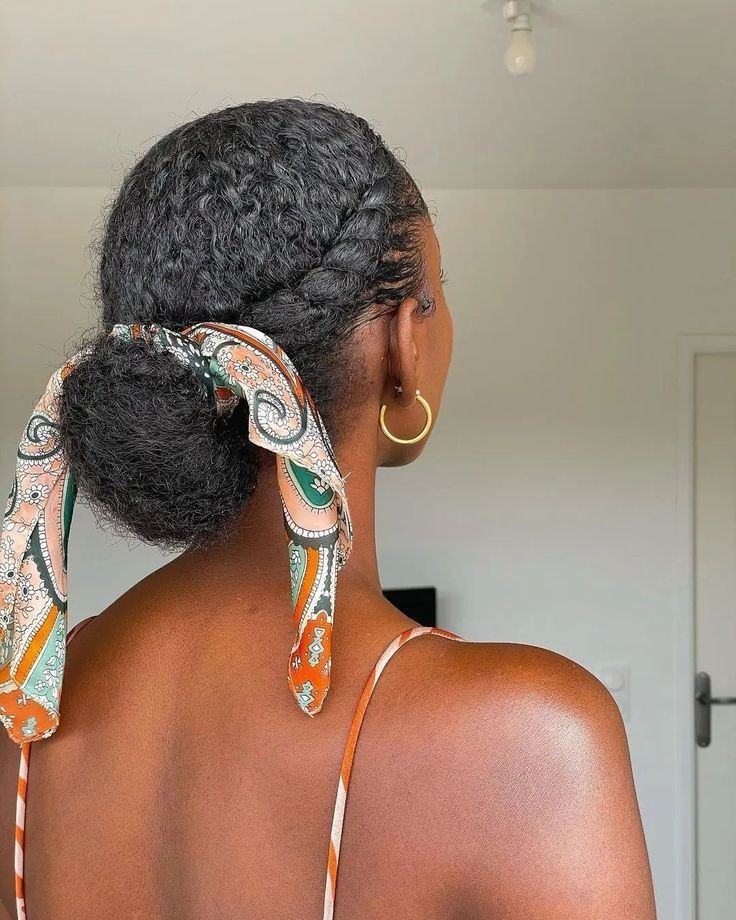

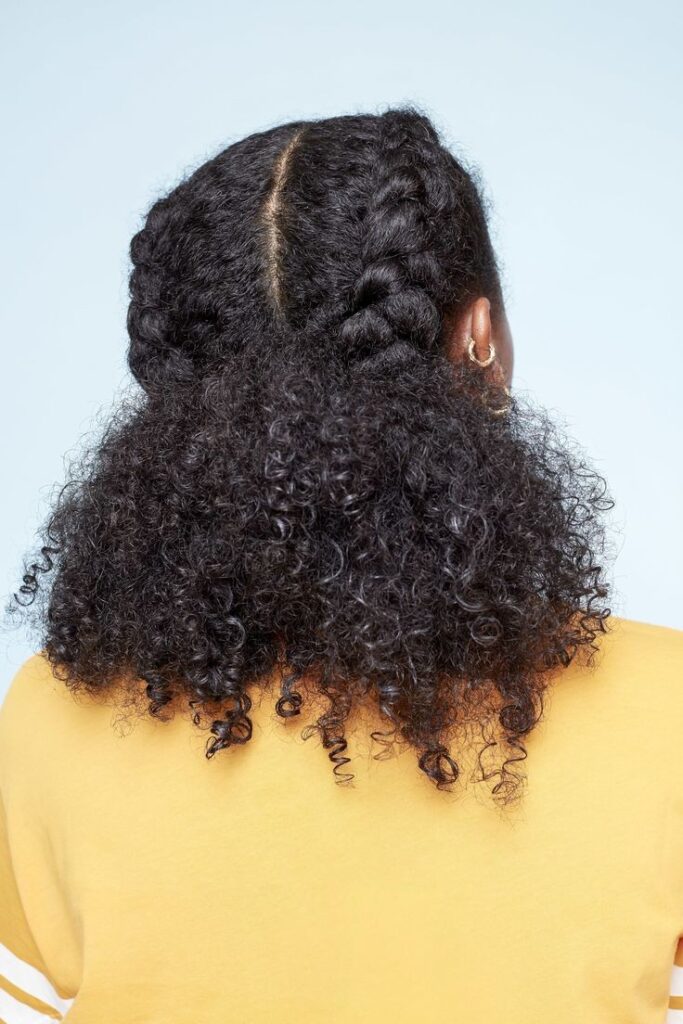



Additionally, the natural hair may intertwine with the braids, making it even more intricate to separate them. It is essential to exercise caution and patience when removing knotless braids to ensure the hair remains healthy and undamaged throughout the process. Seeking professional assistance or following proper removal techniques can help mitigate any potential difficulties and maintain the overall integrity of the hair.
Knotless Braids Maintenances
Knotless braids maintenance involves gentle cleansing, moisturizing, and periodic touch-ups to preserve their sleek appearance. Avoiding excessive tension and keeping the scalp hydrated ensures longevity. Regular care sustains the seamless look, making knotless braids an enduring and low-maintenance style.


In conclusion, knotless braids offer a more natural and gentle alternative to traditional braiding methods. They provide versatility and low maintenance, making them a popular choice among many individuals. However, it is important to be aware of the potential cons such as longer installation time and higher cost. As with any hairstyle, proper care and maintenance are key to keeping knotless braids healthy and long-lasting. Ultimately, the decision to get knotless braids should be based on personal preference and individual hair needs. Consult with a professional stylist to determine if this style is right for you.

